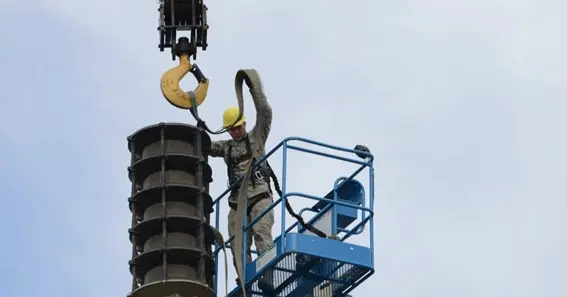Also Read N: Mastering Technical Analysis for Trading Indices: Key Indicators to Watch
Also Read P: The Ultimate Guide to Choosing the Best Dry Dog Food for Your Furry Friend
Lifting heavy loads can be challenging, but with the right equipment and safety measures in place, it can be done efficiently and securely. Lifting slings are essential tools used to hoist and move heavy objects, and they play a crucial role in ensuring workplace safety. Whether you’re working in construction, manufacturing, or any other heavy lifting industry, being mindful of the correct safety procedures is crucial when utilizing lifting slings. In this article, you can explore some important safety tips to keep in mind to ensure the well-being of both workers and the loads being lifted.
1: Choose the Right Type of Lifting Sling
Selecting the appropriate type of lifting sling is the first step to ensuring safety. Various types of slings are available, such as chain slings, wire rope slings, and synthetic web slings. The choice depends on factors like the weight of the load, the environment, and the type of materials being lifted. Using the wrong type of sling can compromise safety and result in accidents.
2: Inspect Slings Before Use
Regular inspection of load lifters is a non-negotiable safety practice. Before every use, examine the sling for any signs of wear and tear, such as cuts, fraying, or kinks. Also, check the fittings and attachments for any defects. A thorough inspection ensures that the sling is in optimal condition and capable of withstanding the load.
3: Calculate Load Weight and Capacity
One of the most critical safety considerations is ensuring that the lifting sling’s capacity matches the weight of the load. Exceeding the sling’s weight capacity can lead to disastrous consequences. Always calculate the weight of the load accurately and select a sling with a suitable working load limit (WLL) that can manage the weight without exertion.
4: Proper Lifting Techniques
Proper lifting techniques are vital to preventing strain on the load and the sling. Ensure the load is evenly balanced, and use lifting equipment for controlled movement. Avoid sudden jerks or movements that can place excessive stress on the sling. Training workers in proper lifting practices can significantly reduce the risk of accidents.
5: Maintain Clear Communication
Effective communication among team members during lifting operations is essential. Signals should be established and understood by everyone involved in the lifting process. Clear communication ensures that all actions are coordinated, and the load is moved smoothly without sudden movements that could endanger workers or the load.
6: Store and Maintain Slings Properly
After using load lifters, proper storage, and maintenance are crucial to prolong their lifespan and ensure their continued safety. Slings should be stored in a dry, clean, and well-ventilated area to prevent rust or degradation. Avoid placing heavy objects on top of slings, as this can cause unnecessary pressure and deformation.
7: Avoid Abrasions and Sharp Edges
Lifting slings should be protected from rough or sharp surfaces that could cause abrasion or cutting. Use padding or protective materials to cover the edges and corners of loads to prevent damage to the sling. Avoid dragging slings across rough surfaces, and be cautious when moving loads near walls or corners.
8: Use Appropriate Attachments
The attachments used with load lifters, such as hooks, shackles, and connectors, also ensure safety. Use attachments that are compatible with the sling and load, and ensure they are in good condition and properly secured. Inadequate or faulty attachments can lead to accidents and failures.
Conclusion
Lifting slings are indispensable tools in industries where heavy loads need to be moved safely and efficiently. By following these important safety tips, you can ensure that the use of load lifters remains incident-free. From choosing the right type of sling to proper load calculations, thorough inspections, and clear communication, every step contributes to a safer working environment. Safety should always be a priority when working with lifting slings, as it protects workers and safeguards the integrity of the loads being lifted.






